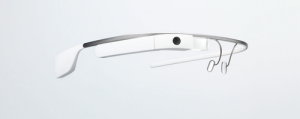A version of Google Glass for people who already wear glasses will arrive in a few months, the head of the Google project said Monday.

“In the next few months we will release a version that will integrate into glasses. So if you are wearing glasses, you’d be able to use this,” said Babak Parviz, founder and head of the Google Glass project at Google, during a speech at the Hot Chips conference in Stanford, California, on Tuesday.
If the Google Glass platform is successful, “you’ll see different optics,” Parviz said.
But will there be Google Glass contact lenses? That is possible, but perhaps in the distant future, Parviz said. “In principle that’s a doable thing, someday actually in the future contact lenses may arrive. It’s not immediate.”
As a professor at the University of Washington in Seattle, Parviz worked on putting displays in contact lenses.
“It was fun, we went all the way to 1-pixel on a contact lens that worked wirelessly, but even that was quite difficult,” Parviz said.
In his speech, Parviz talked about the promise of Google Glass as a possible successor to smartphones for communications and information. It provides immediate and hands-free access to information, and can overlay the data on what may seem like a large screen.
“The cell phones screens… are limited for the most part to what the cell phone is. It would be very difficult to get a cinema-size display if you don’t have a form factor like this,” Parviz said.
Google ships its own smartphones and provides the OS for hundreds of millions of Android phones, but Glass has its own advantages. Smartphones, tablets and Google Glass will be able to co-exist, but ultimately the cutting-edge technology will take over, Parviz said. Google Glass could take over from smartphones the way mobile devices took over from computers and telephones as communications tools.
“It’s not to say the smartphones aren’t good, but there are certain things definitely unique to this platform that smartphones will not be able to do,” Parviz said.
There are privacy concerns as well, and Parviz said it will take some time for society to figure out Google Glass. He likened the Google Glass to the first time the camera came out in the late 1800s, which caused an uproar because people were scared that someone would violate their privacy by randomly taking their picture on a street. Now cameras are part of our daily lives, Parviz said.
Google is trying to improve the hardware.
The company wants Google Glass to last all day on a single charge, while delivering the performance to handle the vast amount of information it collects. It also needs to interact better with the human body and environment through optics and photonics. Another challenge is video processing, as the device may capture a lot of video, and also be used for augmented reality.
“What we have today is a good solid first step, but not enough especially for video processing. Because the more this platform is successful, we’re going to be collecting more video,” Parviz said.
Another goal is to keep the device stylish, while reducing the size of components and keeping power consumption down.
“We’re very excited about this platform,” Parviz said. “We’ve made some really solid progress in the right direction and hopefully we can accelerate that.”





